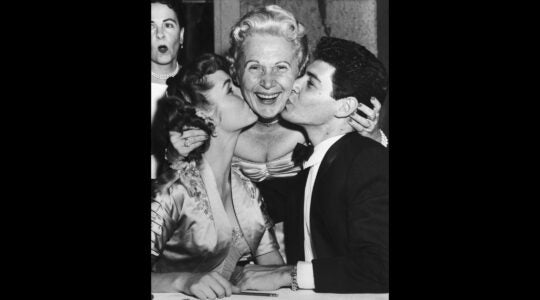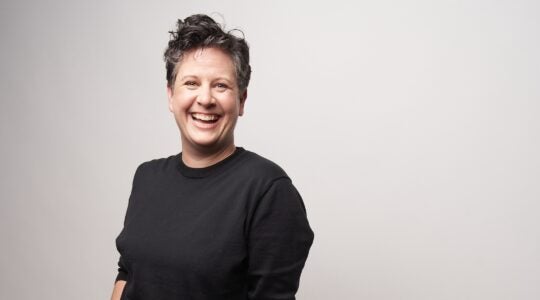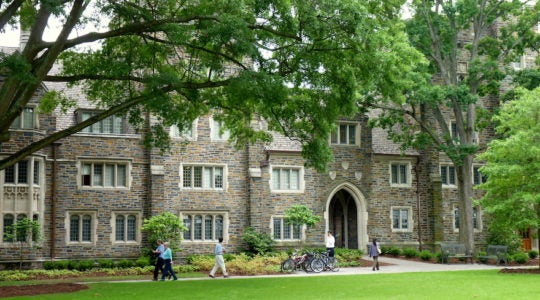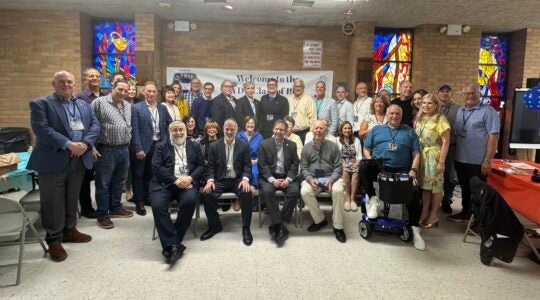Sugar Land, Tex. — Josh Rocco says many of his fellow Abraham Joshua Heschel High School 2014 graduates are studying in college, participating in various educational programs in Israel, or drilling in the Israeli Army.
He’s the only one working on his wrist shot and backchecking.
Rocco, 18, is a first-year member of the Sugar Land Imperials, a junior hockey team located in this Houston suburb. He’s playing with the Imperials — part of the North American 3 Hockey League (NA3HL) — with an eye on earning an athletic scholarship to a Division I collegiate hockey team in a few years.
Rocco, who has deferred his acceptance to Trinity College in Hartford, Conn., is a veteran of several club-level hockey teams in the New York City area (Heschel School, on the Upper West Side), does not offer ice hockey), but said his skills were not advanced enough to earn him an athletic scholarship. “I pride myself on defense — and my passing,” he said after a workout one recent afternoon. In the NA3HL, he’s sharpening his skills against a higher level of competition.
Enter the Imperials.
The two-year-old team, the highest-ranking ice hockey squad in the Houston area since the departure last year of the American Hockey League Houston Aeros, is coached by Jared Palmer, whom Rocco met at a hockey camp three years ago. Palmer called when he got the job last year, and invited Rocco to try out for the roster.
Rocco, 6-foot-2 and 200 pounds, made the team.
While many players in the NA3HL share his goal of earning an athletic scholarship one day, Rocco’s unique path to college – he plans to go eventually, whether or not he earns an athletic scholarship, and study either marketing or interior design – shows the variety of gap year activities that are open to high school graduates who prefer not to proceed immediately to a university campus.
“It’s unusual,” Carol Weintraub, director of institutional advancement at the Heschel School, said of Rocco’s athletic-oriented gap year option. While the school encourages its graduates to take part in gap year programs, no one there keeps track of alumni gap year activities that lack a Judaic slant, she said.
A generation ago, formal or informal gap year programs were the exception, an avenue for the high school graduate who was unsure of what to study in college, who didn’t have the funds for tuition or who simply didn’t feel ready for the next step of higher education. Most high school graduates either went to work or went to college.
In recent years gap year programs have gained in popularity, though only a minority of high school graduates take part in them.
They are largely, after all, an option only for affluent families, said Lynn O’Shaughnessy, a California-based education writer and blogger; but the situation appears to be different in parts of the Jewish community.
A year or two studying in Israel, or sometimes serving in the IDF, has become de rigueur for graduates of Modern Orthodox yeshiva high schools, most of whom later attend college. Even at the Heschel School, which is not Orthodox, Israel is a popular choice for some graduates. “That’s normal,” Rocco says.
Gap year programs can both help high school graduates sharpen their academic focus and increase their chances of getting into the college of their choice, says Michael Courtney, associate director of college counseling at SAR High School in the Bronx. “Several students … will wait until gap year to apply if extenuating circumstances have occurred and they want to showcase strong senior year performance to help demonstrate to colleges how they are on an upward trend.”
Traditionally, gap year activities in the wider community have included specialized study, foreign language immersion, devotion to a hobby, intensive travel or volunteer work. “The best antidote for academic burnout could be a gap year,” O’Shaughnessy wrote in her blog, “The College Solution.” She described a student, rejected by MIT, who used his gap year to invent “an environmentally friendly scooter” that earned his acceptance into MIT.
“Colleges routinely let students postpone the start of their freshman year,” O’Shaughnessy wrote. “Harvard is so high on the benefits of a gap year that it’s been proposing this opportunity in the acceptance letters for decades. Anecdotal evidence suggests that students return to school more focused and mature and ready to start their college career.”
“Gap years can be pricey,” she warns — costs of formal gap year programs can range as high as $10,000-$20,000. Out of bounds for many families.
For many students, gap year activities, can serve as an investment in the future – admission into a better school, better performance in the classroom once there.
Junior hockey is an example. While taking part in the lower rungs of baseball’s minor leagues can cancel a player’s amateur status, making a player ineligible for an athletic scholarship, junior hockey is strictly amateur.
The junior system, a fixture in Canada for a century that has produced many of the National Hockey League’s top stars, has expanded south of the border in recent decades, paralleling the sport’s growth in popularity.
Junior hockey is a network of development leagues. Players, generally ages 16-20, pay to play – and to improve their skills. In the US, the top level is Tier I; Tier III, the NA3HL’s, is the lowest level.
Players on Tier III teams typically pay a fee, from $4,000 to $6,000, for a season’s play, in addition to room and board.
Rocco declined to discuss his financial arrangement with the Imperials. He lives with a Jewish family in the Sugar Land area, part of the league’s “billet host family” program that welcomes out-of-town players during the September-March season. He’s articulate, with a vision beyond a future in sports, and a strong Jewish identity.
Is time in junior hockey – Rocco, a seventh-round draft pick by the Imperials last year, said he may play here beyond 2014-15 – a good investment for the college-bound?
Not necessarily, O’Shaughnessy said. “There are very few hockey scholarships” available. “There are only 44 Division I [hockey] schools, and just 1,168 men compete” at that top level. “The average Division I hockey scholarship is less than $14,000,” she adds – far from covering all of a university’s financial requirements.
“I’d say it’s not smart to spend money and time pursuing something that probably won’t pan out,” O’Shaughnessy told the Jewish Week.
Rocco knows the odds.
Maybe he won’t earn a hockey scholarship; in that case he’ll try to get a “walk-on” spot on his college’s hockey team. Even less likely: he’ll get to the NHL.
For now, Rocco is living a dream, spending a year playing the sport he took up when he was four. His schedule consists of workouts, practice sessions, and games, most of them on weekends.
The Imperials play at the Sugar Land Ice and Sports Center, a weakly heated arena that seats about 2,000 fans (several hundred come out for most games), and whose sideboards advertise local law firms and insurance companies. Tara Lipinski, 1998 Olympic figure skating champion, did some of her training at the rink.
Rocco said he is the only Jewish player on the Imperials’ roster. There are probably a few others in the 31-team league, on such teams as Sauk Rapids, Minnesota’s Granite City Lumberjacks and the Cody, Wyoming’s Yellowstone Quake, but he hasn’t met them yet.
Some friends back home are surprised when they hear how Rocco is spending his gap year, he said. “I’m not a typical Jewish kid.”
The New York Jewish Week brings you the stories behind the headlines, keeping you connected to Jewish life in New York. Help sustain the reporting you trust by donating today.




